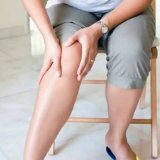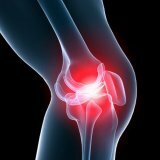Systemic scleroderma: symptoms, causes, diagnosis and treatment
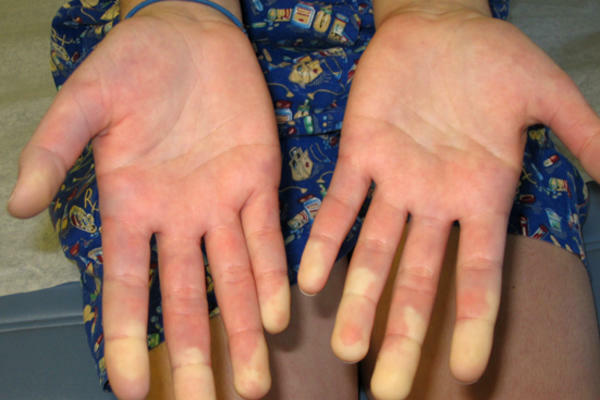
Scleroderma of the systemic type is a pathology of connective tissue that affects the skin, the musculoskeletal system, internal organs and vessels.The essence of the disease - disrupted blood circulation, there is a proliferation of connective tissue, its inflammation and densification.
Systemic scleroderma refers to autoimmune diseases - this means a malfunction in the functioning of immunity, when it begins to attack the cells of its own organism.
Table of contents:Classification of the disease
In medicine, there are several types of the disease under consideration, each of which is characterized by characteristics and characteristics.
Diffuse scleroderma
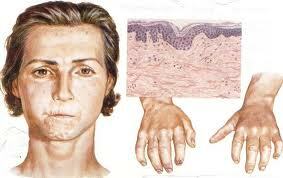
This type of pathology is characterized by the defeat of the skin of the extremities, face and trunk.Moreover, characteristic lesions with diffuse scleroderma progress within a year and already 12 months after the first visible lesions, the process affects virtually all parts of the body.Simultaneously with skin lesions, Raynaud's syndrome, the pathology of the vessels, is noted in patients, which is manifested by hypersensitivity to cold / heat.A diffuse form of systemic scleroderma is characterized by the rapid development of lesions of internal organs.
Cross-type
It will be characterized by a combination of symptoms of systemic scleroderma with signs of other rheumatological diseases.
Presclerodermia
This type of disease is cautiously called true scleroderma because it is characterized by isolated Raynaud's syndrome( in parallel with it there are no lesions of the skin and other pathological changes in the body) and the presence of autoantibodies in the blood.
Limited scleroderma
This is a typical course of the autoimmune disease under consideration - Raynaud's syndrome is expressed, only after a long time there are limited skin lesions( they are exposed to the feet / hands / face), and even later - signs of damage to the internal organs.
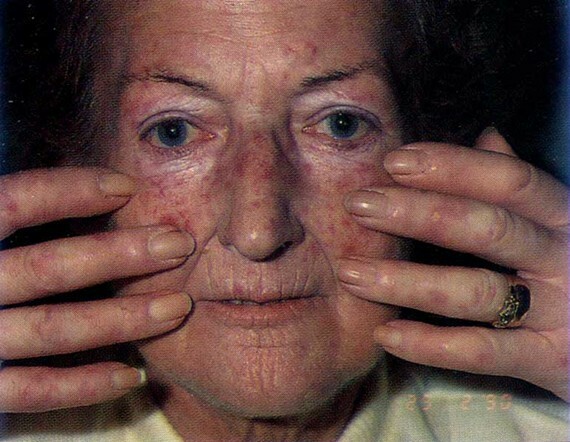
Visceral view
For him, a distinctive feature is the defeat of solely internal organs.
A separate view of the juvenile form of scleroderma is when the disease develops in childhood.
Causes of scleroderma development
The true reasons for the appearance and development of the autoimmune disease under consideration have not yet been established.Doctors have only the assumption that scleroderma has a hereditary / genetic etiology.It is interesting that for a long time pathology can not be manifested at all and does not even progress - it seems to be "latent" in the body.Provoke the development of pathology may hormonal disorders, acute respiratory infections, any inflammatory / infectious process in the body, taking place in a chronic form.
In addition, stress, trauma, hypothermia, regular poisoning of the body with chemicals, prolonged intake of certain medicines can serve as a "push" to the progressive course of scleroderma.
Clinical picture
The disease under consideration is quite complicated - even the clinical picture is multifaceted and can vary depending on the state of overall human health, the level of nutritional value and other external factors. But in any case, for general scleroderma symptoms are common:
- spontaneous weight loss - this occurs even with excellent appetite and total lack of exercise;
- general weakness and fatigue - this condition is noted by patients as permanent, many doctors diagnose chronic fatigue syndrome and prescribe completely inadequate treatment;
- irregular body temperature increases - they are not associated with any colds and infectious diseases.
All other symptoms of scleroderma are directly related to what part of the body is affected by scleroderma.
Skin and vascular lesions
Skin lesions in patients with scleroderma are divided into several types:
- Dense edema - the skin acquires a very dense consistency, it is impossible to collect it in a crease, if you press on the skin lesion zone, a pit will remain.Wrinkles on the face are smoothed out, but this does not bode well. Soon, if you ignore medical care, your face will acquire an absolutely zero facial mask.If the hands are affected, the fingers become swollen / dense and they can not even be bent.
- Complete or partial change in the color of the skin - noticeable alternating skin areas with a high level of pigmentation and its complete absence.With the course of the disease, vascular "pictures" appear.
- Thinning of the skin - the patients develop deep creases around the mouth that cause pain and make it difficult to open the mouth.In general, the skin becomes shiny, flabby and wrinkled.
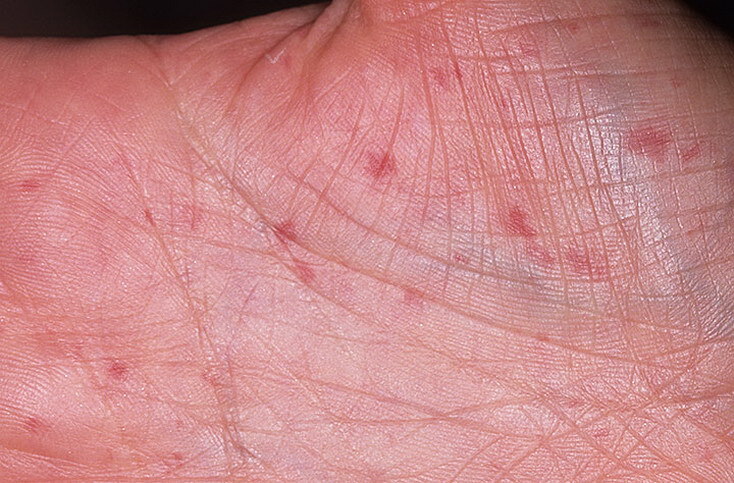
In the event that the disease under consideration is actively progressing and no patient is receiving any medical care, atrophied skin areas appear.
One of the most pronounced signs of systemic scleroderma is Raynaud's syndrome, and it is often the only symptom of .In this case, the clinical picture of the disease in question will be completely identical to the signs of Raynaud's syndrome:
- , even with little exposure to cold or any psychoemotional "shake-up", the lumen of the vessels narrows.The result is paleness and numbness of the fingers, and after a short period of time - burning and tingling;
- if vascular spasm persists, the fingers begin to acquire a cyanotic shade, and the patient begins to feel quite intense pain;
- in any warming procedures the pain recedes, the skin becomes red.
Note: if Raynaud's syndrome is actively progressing, there are no prescriptions for medicines from doctors, then with time, painful and slowly healing ulcers at the fingertips will appear with 89% probability, and eventually their necrosis develops.
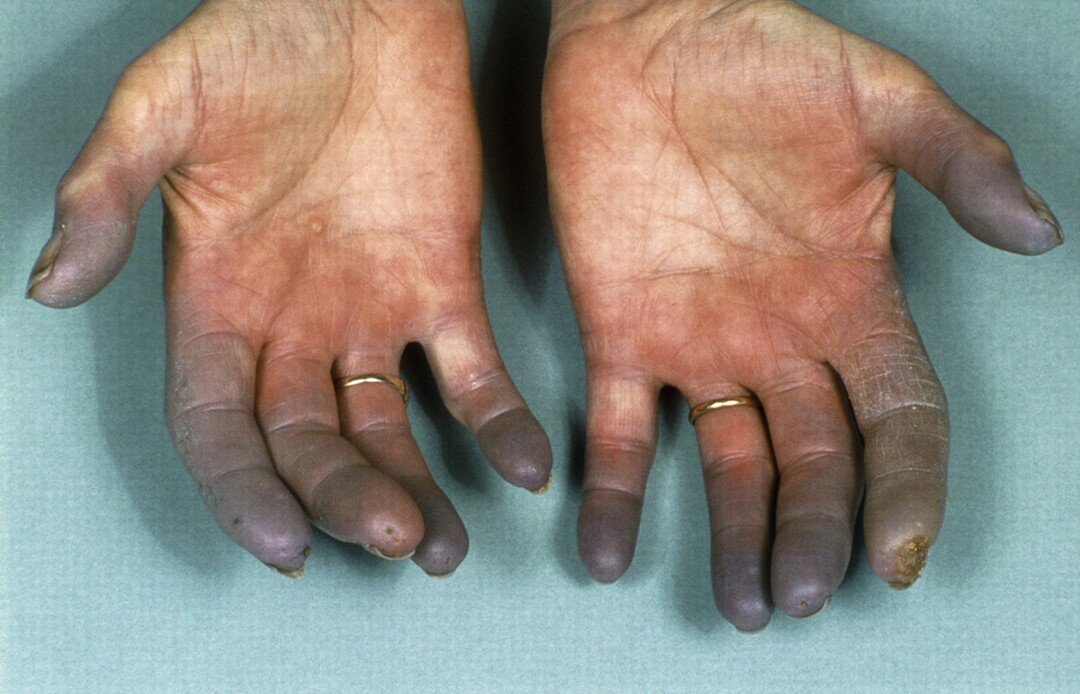
Problems in the locomotor system
These include:
- calcinosis - deposits of calcium salts occur in the area of the upper limb fingers and the anatomical location of the joints.Outwardly this is manifested by white foci, which are clearly visible through the skin;
- muscle tissue - the patient is constantly worried about pain in the muscles that are not related to physical exertion;
- joints large and small - the patient complains of pain in them aching nature, in the morning the severity of flexion / extension of the joints is noted, with the course of the disease, the stiffness of movements develops;
- bones - progressive scleroderma leads to deformation of the fingers, they can shorten and bend.
Lesion of the lungs
Symptoms of pulmonary dysfunction may appear one of the first when other signs of scleroderma are absent.The most characteristic symptom of lung damage is shortness of breath and a prolonged dry cough. But in some cases, more complex pathologies develop:
- pleural inflammation - pleurisy of a chronic nature;
- is an inflammatory process of lung interstitial tissue that provokes fibrosis - interstitial lung fibrosis;
- a steady increase in the pulmonary artery - pulmonary hypertension.
Heart Attack
Patients with developing scleroderma complain of recurrent pains in the upper chest, the appearance of edema with moderate fluid intake, increased heart rate at rest. A prolonged process of heart damage can lead to:
- fibrosis of the heart muscle - it becomes denser, which provokes a disruption in activity;
- endocarditis is an inflammatory process of the inner membrane of the heart;
- pericarditis is an inflammatory process that occurs in the serous membrane.
Kidney damage
It can develop in two forms:
- acute form - the pathological process begins abruptly, accompanied by rapidly developing renal insufficiency, arterial pressure that is rapidly rising to critical levels, a significant decrease in the amount of secreted urine, confusion of consciousness;
- chronic form of the lesion - the inflammatory process in the kidneys proceeds for a long time, without any significant symptoms.In the study of biomaterials, a large amount of protein in the urine is detected, an increase in the number of red blood cells in the blood.
Problems in the work of the gastrointestinal tract
With progressive scleroderma, lesions of the esophagus are most often detected.They are manifested by belching, heartburn, throwing the contents of the stomach into the esophagus, complicated by the passage of food into the stomach, the formation of trophic ulcers on the mucosa of the esophagus.
As a rule, against the background of scleroderma, there are no pathological changes in the functionality and structure of the stomach and duodenum.But some violations of the intestine will be - a weakened peristalsis, a constant feeling of heaviness in the abdomen, constipation.
In addition to the above-mentioned signs of development of scleroderma, it is possible to note the appearance of abnormalities in the thyroid gland functioning( its functionality decreases) and a marked decrease in sensitivity in the fingers and some areas of the skin - this is how a disturbance in the work of the nervous system.
Diagnostic measures
To establish an accurate diagnosis, only patient complaints for the physician will not be enough - many of the clinical manifestations of scleroderma are identical with respect to the signs of other pathologies. Diagnostic measures are as follows:
- questioning the patient for complaints - how long they have appeared, with what intensity they are, whether there are abnormalities in the work of internal organs;
- examination of the patient - with actively progressing scleroderma, the doctor can pay attention to white foci around the joints and fingers, thinning and changing the color of the skin, swelling;
- laboratory blood test - ESR will be increased, the number of leukocytes is increased, which indicates the current inflammatory process;
- Immunological studies - autoantibodies will be detected in the blood;
- histological examination of affected skin lesions( biopsy) - this allows to identify the current inflammatory process at the site of examination;
- study of the vessels of the nail bed, capillaroscopy - the doctor can establish violations in the vascular system.
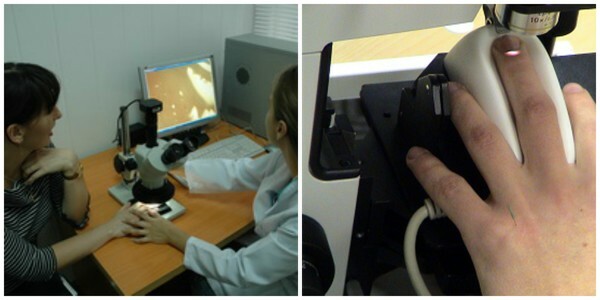
If the question of scleroderma is no longer being put, then the doctor necessarily sends the patient to a radiology study - this allows to identify deposits of calcium salts, destroying processes in the nail phalanx, inflammatory processes in the lungs.
In the case of a patient's complaints of cardiac dysfunction, an electrocardiogram is prescribed, ultrasound examination.
Scleroderma treatment methods
Scleroderma is treated only with complex therapy - it is not recommended to exclude something from it.It is important to seek help from doctors in time to get adequate treatment.
Medical treatment
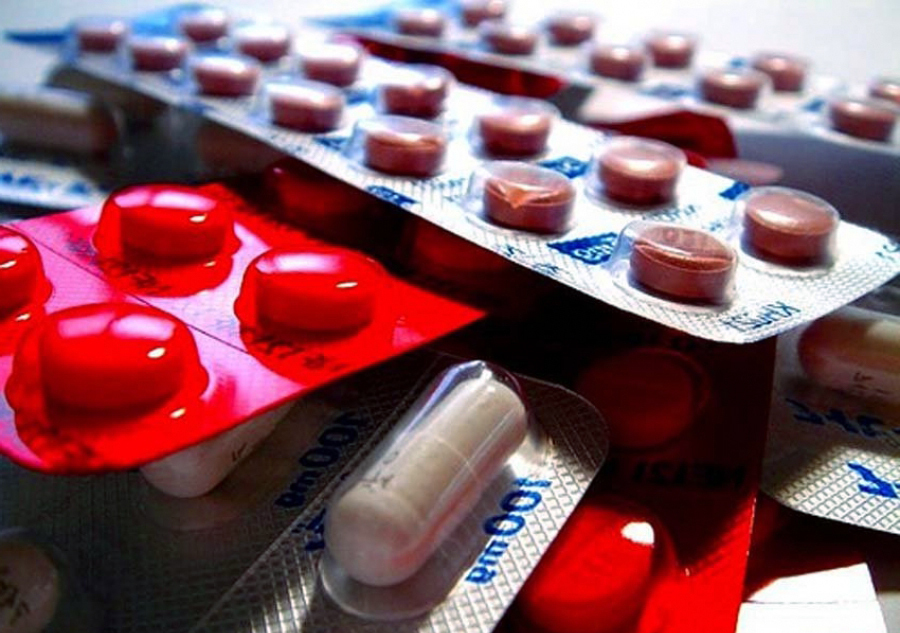 The doctor prescribes medications only individually - a lot depends on what stage of development is scleroderma, what lesions are available at the time of prescribing therapy.Below are the main types of drug therapy.
The doctor prescribes medications only individually - a lot depends on what stage of development is scleroderma, what lesions are available at the time of prescribing therapy.Below are the main types of drug therapy.
Anti-inflammatory therapy
Cytostatics, non-steroidal anti-inflammatory drugs, aminoquinoline agents, glucocorticosteroid hormones give an excellent effect in the treatment of scleroderma.The competent use of these medicines allows to reduce the level of development of the inflammatory process, to stop its progression, to reduce the intensity of the pain syndrome.
Note: many of the medicines listed above can provoke the development of serious side effects: nausea and vomiting, intestinal disorders, intoxication.
Therapy of disorders in the vascular system
It is mandatory that the patient is prescribed vasodilator drugs that improve blood circulation and reduce the level of its coagulation.
Therapy aimed at restraining the development of connective tissue compression processes
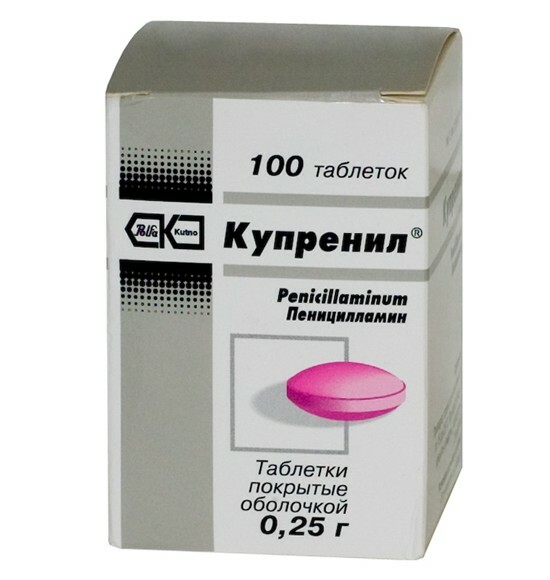 Such treatment is advisable at later stages of scleroderma development, when severe musculoskeletal and muscle tissue injuries are observed.Specialists most often use Kuprenil - this drug can suppress the formation of excess connective tissue and compaction.
Such treatment is advisable at later stages of scleroderma development, when severe musculoskeletal and muscle tissue injuries are observed.Specialists most often use Kuprenil - this drug can suppress the formation of excess connective tissue and compaction.
In addition, patients take enzyme preparations, visit plasmapheresis procedures.
Note: signs of scleroderma are successfully removed by radon and / or sulphide baths - only the attending physician can make specific appointments, as this depends on the stage of development of scleroderma.Recently, the treatment with light has been widely used: ultraviolet A spectrum is used for this.
Traditional medicine for the treatment of scleroderma
Important: treatment of scleroderma with folk remedies without the use of medications is impossible - in any case, the patient must visit the doctor for controlState of health, take courses of drug therapy.But official medicine does not deny the favorable effect of folk remedies, at least they will help to strengthen immunity and increase the body's resistance.
There are many folk remedies that healers recommend taking with diagnosed scleroderma - they all deserve attention from the patient. Below are just some of them, the most affordable:
-
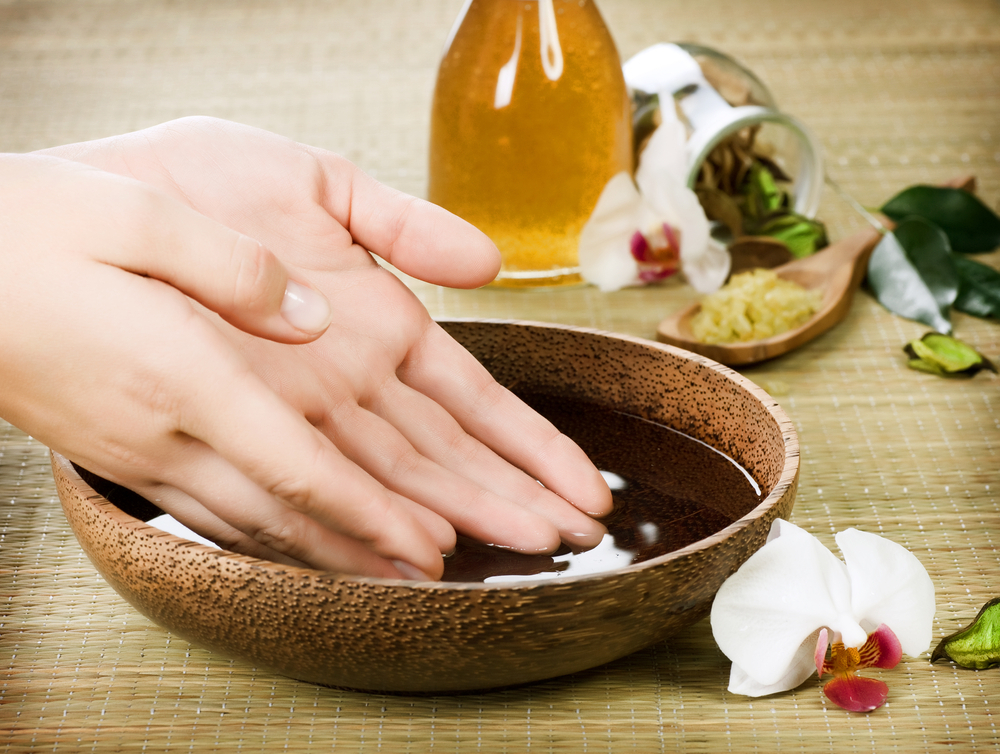 After taking bath procedures( it is bathing to well steal the body) you need to apply to painful places compresses of ichthyol ointment and aloe juice.Ointment is prepared in a proportion of 1: 1, the compress is fixed with a bandage, you can not use an adhesive plaster for this.The number of such procedures - no more than 2 times a week, the time of finding the compress on the sore spot - 4-6 hours.
After taking bath procedures( it is bathing to well steal the body) you need to apply to painful places compresses of ichthyol ointment and aloe juice.Ointment is prepared in a proportion of 1: 1, the compress is fixed with a bandage, you can not use an adhesive plaster for this.The number of such procedures - no more than 2 times a week, the time of finding the compress on the sore spot - 4-6 hours. - It is necessary to take a head of onions of medium size, bake it in the oven, chop and combine with a teaspoon of honey( liquid) and 2 tablespoons of yogurt( you can use sour home milk).Mix everything and apply compresses to the affected areas with this mixture 4 times a week.The duration of the remedy on the body is no more than 2 hours.
- Purchase the internal pork fat, melt it and insert dry wormwood.It is necessary to observe the exact proportion - 1 part of fat and 5 parts of dry plant.The resulting composition should be evaporated in the oven on low heat for 6 hours, then the ointment is cooled and stored in the refrigerator.The second composition of the drug: in the pork inner fat, melted in a water bath, dry herb of cocklebur and celandine in the proportion of 1: 1: 1 is added.Further preparation takes place according to the above method.Scheme of application: lubricate sore spots three times a day for 90 days, and, alternating these formulations every other day.
- In equal parts, mix dry medlitsu, sporish and horsetail field.Then take 1 tablespoon dry collection, pour 250 ml of water and stand the resulting product in a water bath for 15 minutes.The prepared broth is infused 2 hours, taken ½ cup twice a day for half an hour before meals.You can drink a decoction of 1/3 cup three times a day an hour after eating.
- Decoction of cyanosis and adonis will help normalize the work of the heart with severe lesions.It is necessary to take 1 tablespoon of dry collection from the earlier mentioned herbs, pour 500 ml of boiling water and insist in the thermos for 8 hours.The scheme of use: for ¼ cup of broth three times a day, one and a half to two hours after eating.
Please note some clarifications:
- for kidney problems in the prepared decoction from adonis and cyanosis, add a teaspoon of cranberry leaf and the same bearberry;
- for pulmonary pathology - a teaspoon of marsh ledum;
- when there is blood in the urine - a teaspoon of nettle and yarrow;
- with dysfunctional gastrointestinal tract - a teaspoon of wormwood wormwood and a three-leaved watch.
- with the addition of additional components it is necessary to increase the amount of liquid by 300 ml.
During periods of remission of scleroderma, when the clinical picture becomes less pronounced, you can take decoctions of herbs to strengthen immunity and reduce the level of inflammation. For this it is necessary to prepare two different herbal collections:
- leaves of geranium meadow, cranberries, golden rod, mountaineer bird, chamomile pharmacy, perforated St. John's wort, clover meadow, plantain, dandelion roots;
- roots of dandelion and burdock, calendula flowers and medicinal camomile, herb, St. John's Wort, Kipelnik, wormwood, raspberry and psyllium leaves.
Scheme of preparation of medicinal broths: take two tablespoons of the necessary herbal collection, pour 1 liter of boiling water and insist the remedy in the thermos for at least 8 hours.
 Usage scheme: 1/4 cup of broth three times a day for 30 minutes before meals.The course of treatment is 3 months, then there is a break in 14 days and the course of using the second composition of the herbal collection also begins for 90 days.
Usage scheme: 1/4 cup of broth three times a day for 30 minutes before meals.The course of treatment is 3 months, then there is a break in 14 days and the course of using the second composition of the herbal collection also begins for 90 days.
To reduce the intensity of cutaneous manifestations of scleroderma, it is necessary to prepare a tincture from one part of licorice root, birch buds, cinnamon bark, wormwood and three parts of green walnuts( specific proportions: 50 g of specified parts of plants and 150 g of nuts).All this is poured by alcohol in an amount of 500 ml and infused for a month.Then it should be lubricated with tincture of the affected skin 2-3 times a day for 3 months.
Note: treatment of scleroderma is a long process that can not be interrupted in any way.Only the perseverance and regularity of the use of all the above mentioned drugs can give a lasting result, namely, long-term remission.
Nutrition for scleroderma
This systemic disease requires mandatory dietary intake.The task of correcting the diet is to ensure a constant intake of a sufficient number of vitamins and minerals into the body.At the same time, the food should be balanced and in no case "one-sided". A dietitian doctor, when prescribing a diet to a patient with scleroderma, will recommend:
- To consume vitamin A - it supports the immune system and normalizes the skin condition.Products in which there is a high content of vitamin A: carrots, broccoli, spinach, pumpkin and tomatoes.
- Ensure the intake of vitamin E in the body - it reduces the degree of development of inflammatory processes, prevents the development of infections.Foods high in vitamin E: nut oil, almonds, all kinds of vegetable oils, spinach, avocado.
- Try daily to eat foods rich in vitamin C - citrus, strawberry, melon, broccoli.This vitamin protects the skin from the progression of lesions inherent in scleroderma.
Food for scleroderma should be varied, dishes should be better prepared with vegetable oils, consuming a large amount of carbohydrates, which are contained in fruits and vegetables, grains.But at the same time, obesity can not be tolerated-it is difficult for the body to deal with pathological lesions.
Scleroderma is an inadequately studied disease, but doctors emphasize that prolonged remission is possible only with complex treatment and all the recommendations of specialists.Otherwise, everything can end in a fatal outcome for the patient - with the progress of the disease in question, renal and respiratory failure rapidly develop.
Tsygankova Yana Aleksandrovna, medical reviewer, therapeutist of the highest qualification category.

